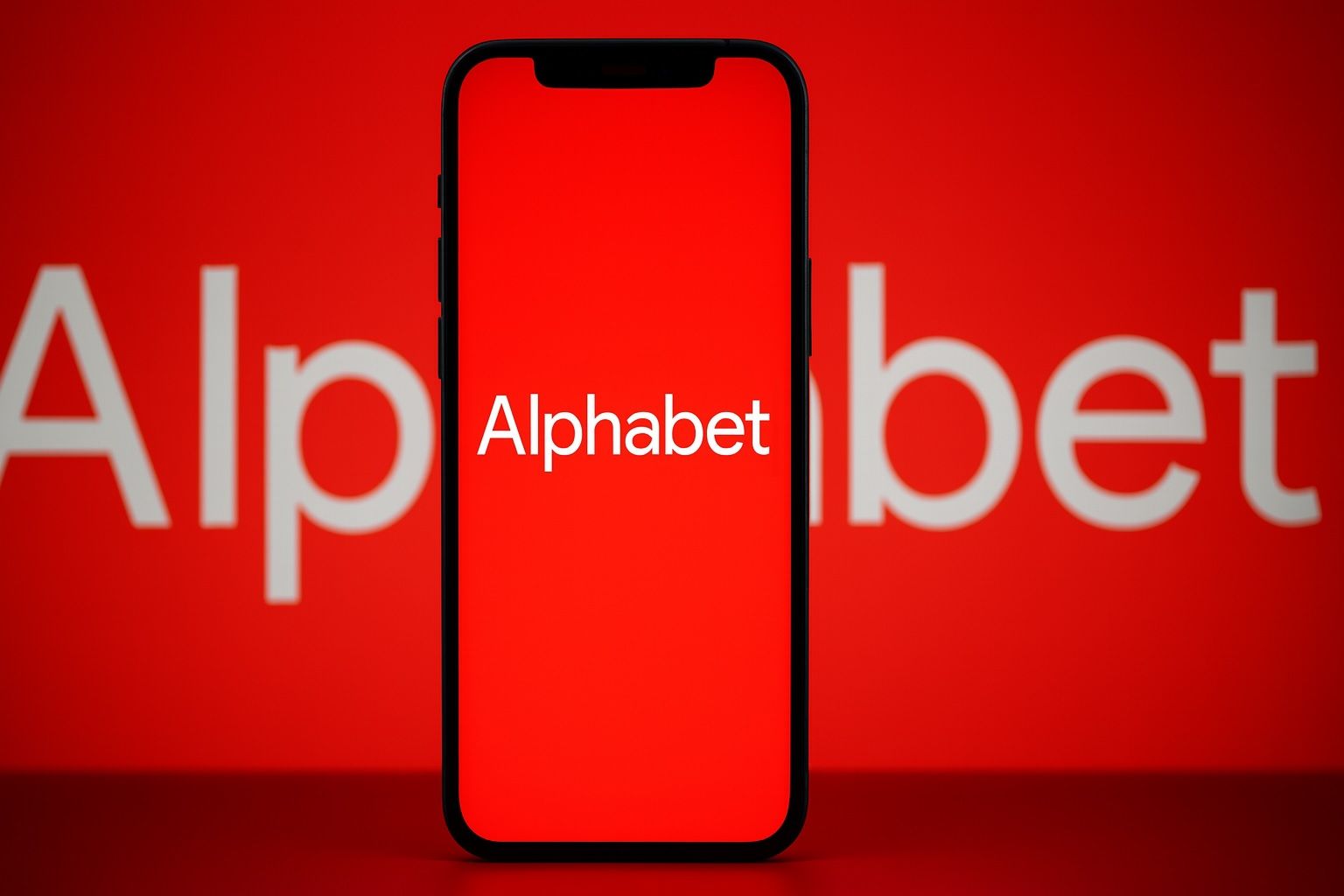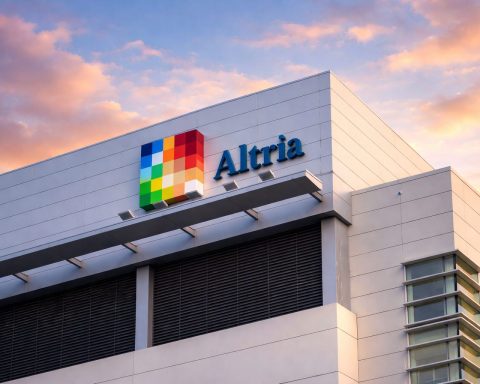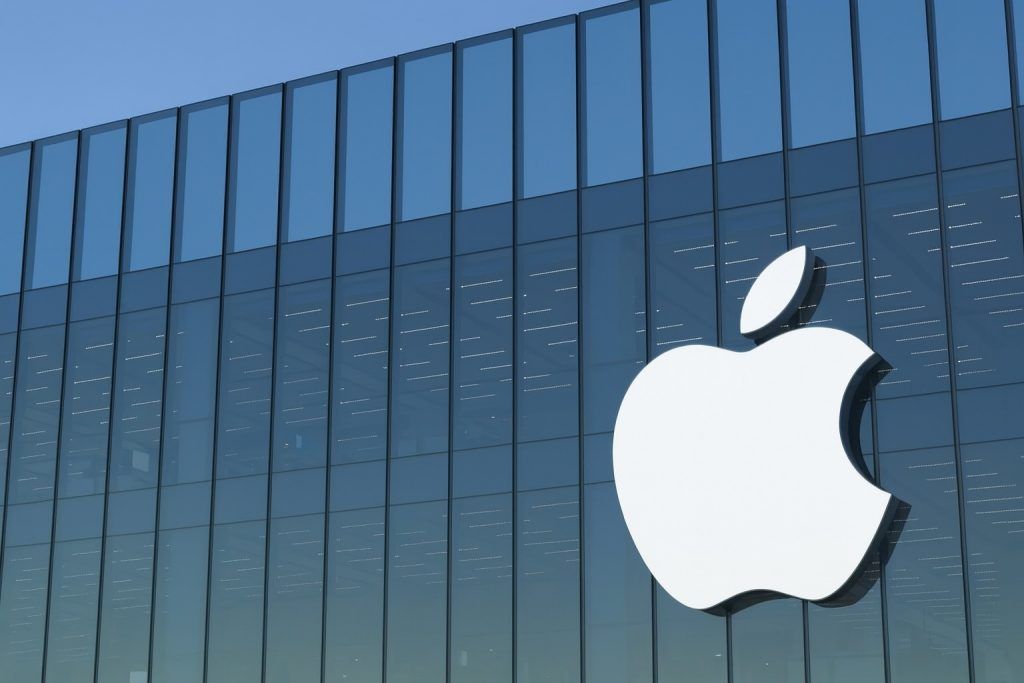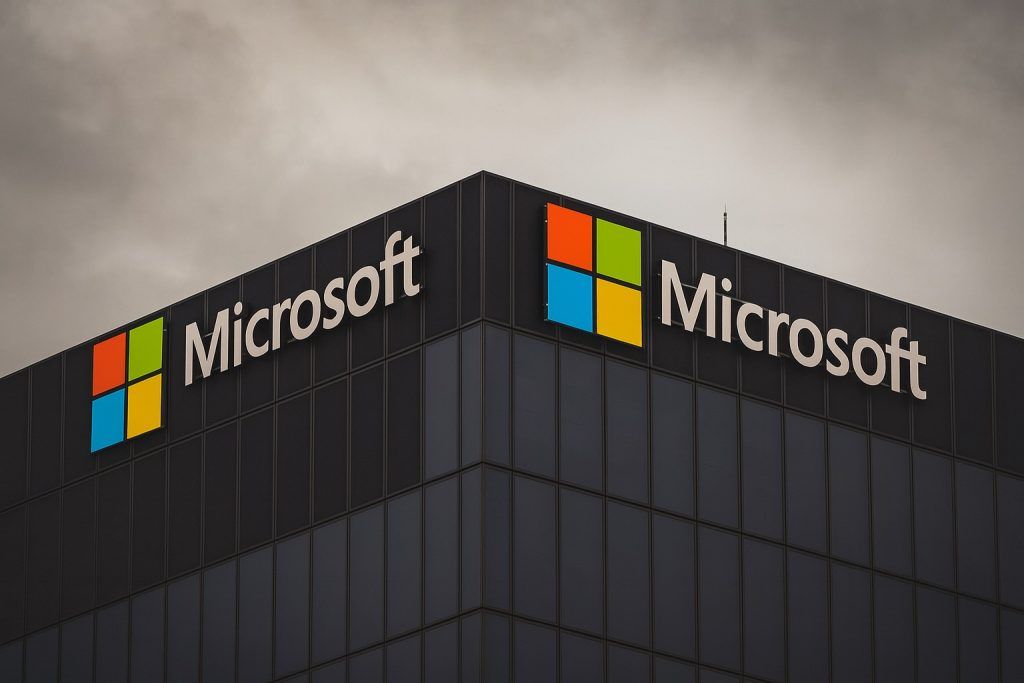Key Facts (October 2025 Highlights)
- Stock Surge to Record Highs: Alphabet’s Class A (GOOGL) and Class C (GOOG) shares both soared to all-time highs in October. GOOGL closed around $256 on Oct. 20 – a record – valuing Alphabet near the $3 trillion mark [1]. By late October, Alphabet stock was up 30%+ year-to-date, far outpacing the S&P 500 (~12%) [2]. In Q3 alone, shares jumped 38%, the best quarter in 20 years [3] [4].
- Robust Q3 Earnings Expected: Alphabet reports Q3 2025 earnings on Oct. 29. Analysts anticipate double-digit growth, with full-year revenue up ~16% and EPS up ~27% vs 2024 [5]. Q2 2025 already saw revenue +13% (to $96.4 billion) and a big earnings beat [6] [7]. A strong Q3 could push the stock to new highs, while any disappointment might prompt a pullback [8] [9].
- Advertising Revival: After a digital ad slump in 2022–23, Google’s ad business is rebounding. In Q2, Search ad revenue jumped +11.7% YoY to $54.2 billion and YouTube ad revenue +13% to $9.8 billion [10] [11]. New AI features (like generative search answers) are keeping users engaged and ad clicks high [12] [13]. Analysts see Google’s ads “firmly back on a growth track,” powering Alphabet’s overall revenue rise [14] [15].
- AI & Cloud Boom: Alphabet is “all in” on AI. In October, Google announced $24 billion+ for new AI/cloud infrastructure (a $15B AI datacenter in India and $9B in U.S. expansions) [16]. Google Cloud revenue is soaring – up 32% YoY in Q2 to $13.6 billion [17] [18] – and has reached profitability (~21% operating margin) for the first time [19] [20]. Google also rolled out AI-packed products (Pixel 10 phones, Pixel Fold, etc.) at its Oct. 4 event [21] [22], underlining its strategy of “AI everywhere.”
- Analysts Bullish, Raising Targets: Wall Street is overwhelmingly optimistic on Alphabet. ~79% of analysts rate GOOGL a “Buy” [23]. Many have hiked price targets – e.g. Goldman Sachs to $288, Scotiabank to $310, BMO to $294 [24]. Oppenheimer’s bull case sees $300 (~18% above current) [25]. Even cautious voices acknowledge Alphabet’s “strong fundamentals” amid the AI boom [26] [27]. Alphabet’s valuation (around 27× forward earnings) is seen as reasonable versus tech peers [28].
- Regulatory Update: Alphabet got a legal reprieve in Sept: a U.S. judge ruled Google will not be broken up in an antitrust case, removing a “significant legal overhang” [29]. The stock jumped 9% on that news [30] [31]. However, regulators still loom. In October, the UK’s CMA gave Google’s search business a special “strategic market status” – enabling tougher oversight of its ~90% search share [32] [33]. The EU also hit Google with a $3.45 billion fine last month over ad tech practices [34] [35]. And in the U.S., the Supreme Court let stand an injunction (from Epic Games’ case) forcing Google to loosen Play Store rules by 2026 [36]. Regulatory pressures persist, even as Alphabet avoids the most drastic measures so far.
Stock Performance: October 2025 Rally to Record Highs
Alphabet’s Class C stock (GOOG) price climbed in October 2025, with a mid-month dip followed by a surge to new highs. Both Alphabet share classes enjoyed a strong October. GOOGL (voting Class A) and GOOG (non-voting Class C) opened the month around $245 per share and ended near $260+, achieving record closes [37] [38]. As the chart above shows, Alphabet stock rallied in early October, took a brief dip around Oct. 7–10 amid a broader tech selloff, then soared to all-time highs by mid-to-late month.
Several milestones underscored this performance. On October 20, Alphabet’s stock closed at an all-time high (~$256), briefly valuing the company at over $3 trillion – a club previously limited to Apple and Microsoft [39]. By Oct. 24, the shares pushed even higher (GOOGL ~$259.9, GOOG ~$260.5 at close) as investors anticipated strong earnings [40] [41]. Year-to-date, Alphabet stock has now climbed about 30–32% [42], vastly outperforming the broader market. For context, the tech-heavy Nasdaq is up ~12% YTD, making Alphabet one of 2025’s standout mega-cap stocks [43].
What drove this surge? In part, relief from regulatory fears spurred buying: after a favorable court ruling in early September (no breakup order), Alphabet’s stock popped over 9% in one day [44]. That momentum carried into October. Additionally, improving fundamentals and AI optimism have attracted investors. Wall Street “shrugged off” macro jitters (like U.S.–China trade tensions and an Oct. government shutdown scare) and refocused on Google’s strengths [45] [46]. Even a sharp Nasdaq selloff on Oct. 10 (–3.6% in one day) only caused a temporary dip – Alphabet quickly rebounded to fresh highs the next week [47]. By mid-October, Alphabet shares were “flirting with record highs” amid a broad tech rally fueled by AI enthusiasm [48] [49].
To summarize the stock’s trajectory and current metrics, see the table below:
| Stock Metric | GOOGL (Class A) | GOOG (Class C) |
|---|---|---|
| Price (Oct 1, 2025 open) | $240.75 [50] | $241.18 [51] |
| Price (Oct 1, 2025 close) | $244.90 [52] | $245.54 [53] |
| Price (Oct 24, 2025 close) | $259.92 [54] | $260.51 [55] |
| October 2025 change | +6.1% (approx.) | +6.1% (approx.) |
| 2025 year-to-date change | ~+30% [56] | ~+30% [57] |
| 52-week high (intraday) | ~$261–262 [58] | ~$262 [59] |
Table: Alphabet stock price highlights for October 2025. Both Class A (GOOGL) and Class C (GOOG) shares saw similar gains. Market capitalization neared $3 trillion as share prices hit the mid-$250s and above. Sources: Yahoo Finance, Nasdaq, Macrotrends [60] [61].
Alphabet’s market capitalization is now flirting with historic territory. At ~$260 per share, Alphabet’s total value is roughly $2.98 – $3.1 trillion, putting it neck-and-neck with Apple as the world’s second-largest public company [62] [63]. This marks a remarkable recovery from late 2022’s tech slump. Investors are clearly betting on Alphabet’s growth engines (ads, cloud, AI) to deliver strong results going forward.
Advertising Rebound Drives Revenue Growth
Advertising remains Alphabet’s financial lifeblood, and 2025 has brought a welcome revival in this core business. After a flat period in 2022–23, ad revenues are growing robustly again. In Q2 2025, Google’s total advertising take was $58 billion+, up about 12% year-on-year [64] – a dramatic turnaround fueled by both macro trends and Google’s own product improvements.
Search Ads: Google’s search advertising – the company’s largest revenue source – has roared back to life. Q2 search ad revenue hit $54.2 billion (+11.7% YoY) [65] [66], accelerating from ~9% growth in Q1 [67]. This double-digit jump is striking given Google Search’s already massive scale. It indicates that advertisers are spending aggressively on search keywords again as the global economy stabilizes. Google’s integration of AI-driven features into search has also helped. New generative answer boxes and “Search Overviews” are keeping users engaged on Google’s platform, which in turn means more search queries and plenty of ad impressions [68] [69]. Notably, Google has managed to introduce AI answers without cannibalizing its lucrative search ads – sponsored links still feature prominently, and some observers believe the richer AI results are actually driving more search volume (and clicks) overall [70] [71]. Sectors like retail, travel, and finance have ramped up search ad budgets in 2025, confident they can reach ready-to-buy consumers on Google.
YouTube Ads: Alphabet’s other advertising juggernaut, YouTube, is likewise booming again. In Q2, YouTube ad revenue climbed to $9.8 billion, a +13% YoY jump [72] [73]. This marked a strong rebound from near-zero growth at one point in 2022. Advertisers have returned to YouTube en masse, attracted by its billions of viewing hours and improved ad formats. Google has aggressively monetized YouTube Shorts (its TikTok-like short video service) with new ad products, and it’s paying off – short-form video ads are bringing in fresh dollars. The company also noted strength in YouTube ads on connected TVs. While competition from TikTok and Instagram remains fierce (YouTube’s overall watch-time is slightly down year-on-year as some users shift to rivals), Google’s efforts to keep creators and viewers engaged – from adding shopping features to cracking down on ad blockers – are helping sustain YouTube’s growth [74] [75]. As one market analyst put it, “Google’s ad businesses are reviving” thanks to these initiatives [76].
Overall, advertising is once again Alphabet’s growth engine. Ad sales contributed the majority of Alphabet’s $96.4 billion Q2 revenue (which was up 13% YoY) [77] [78]. Importantly, the ad revival appears durable: so long as the economy stays reasonably healthy, analysts project double-digit ad revenue gains ahead [79]. Google still commands ~90% of global search market share and has unparalleled data for ad targeting [80] [81]. That dominance, combined with new AI-powered ad tools, has Wall Street confident in Alphabet’s near-term revenue trajectory. Indeed, full-year 2025 consensus forecasts call for +13–14% revenue growth for Alphabet, largely on the back of advertising recovery [82] [83].
AI and Cloud: Alphabet “All In” on Next-Gen Tech
If there is one theme defining Alphabet in 2025, it’s artificial intelligence everywhere. CEO Sundar Pichai’s mantra of an “AI-first” company is being realized at scale this year. Alphabet is spending unprecedented sums on AI initiatives – and investors are cheering the potential returns.
Massive AI Investments: In October, Alphabet unveiled plans to invest over $24 billion in new AI and cloud infrastructure [84]. This includes constructing a $15 billion AI super-center in India (Alphabet’s largest-ever investment in India) and a $9 billion expansion of U.S. data centers [85]. These projects will beef up Google’s capacity to train and deploy advanced AI models globally. In fact, Alphabet’s 2025 capital expenditures are on track to exceed $80 billion – up sharply from ~$52B last year – largely due to AI-related builds [86]. “We’re seeing a once-in-a-generation investment cycle around AI,” said one tech strategist, noting Google is “all in” to maintain its lead [87]. The bet is that these huge up-front costs will yield a competitive moat (and big profits) in the years ahead.
Google Cloud’s Surge: Alphabet’s cloud computing division has emerged as a second powerhouse, thanks to AI. Google Cloud revenue jumped 32% year-over-year in Q2, reaching $13.6 billion [88] [89] – the fastest growth among major cloud providers (by comparison, AWS grew ~17.5%, Azure ~39% in the same period) [90] [91]. More importantly, Google Cloud is now profitable: it achieved ~20–21% operating margins in Q2 after years of losses [92] [93]. This is a milestone that significantly boosts Alphabet’s overall earnings. What’s driving Cloud’s success? Google has leaned into AI offerings in the cloud, attracting businesses that need AI/ML infrastructure. The company’s custom 3nm Tensor Processing Unit (TPU) AI chips are reportedly narrowing the performance gap with Nvidia’s GPUs [94] [95], giving Google Cloud a unique selling point for AI workloads. High-profile wins also help – for example, Google Cloud was chosen as the official cloud provider of the 2028 Olympic Games in Los Angeles [96] [97], underscoring its ability to handle massive, mission-critical projects. All of this has analysts viewing Google Cloud as a strong No. 3 cloud player that’s steadily chipping away at AWS’s lead [98].
“AI Everywhere” Products: Google isn’t just investing in back-end AI – it’s bringing AI to consumers. At the Made by Google event on Oct. 4, the company unveiled a lineup of AI-infused gadgets. The new Pixel 10 and Pixel 10 Pro smartphones debuted with Google’s next-gen Tensor G5 chip, boasting the slogan “AI everywhere” in the user experience [99] [100]. These phones leverage on-device AI for advanced photo editing, real-time translation, personal assistant features and more, putting Google’s AI directly in users’ hands. Google also launched a Pixel 10 Pro Fold (a foldable phone) and the Pixel Watch 4, both loaded with AI-driven features from health tracking to smart assistant commands [101] [102]. While hardware is a tiny slice of Alphabet’s revenue, these releases are strategically important: they showcase Google’s AI prowess in consumer products and keep competitive pressure on rivals like Apple. As one tech reviewer quipped, the Pixel 10 essentially puts “Google’s AI in your pocket” [103].
On the software side, Google is rolling out new AI services for enterprises. Notably, on Oct. 9 it introduced Gemini Enterprise, a platform for companies to build their own AI chatbots and assistants using Google’s large language models [104]. This targets the booming market for generative AI in business, competing with offerings like OpenAI’s ChatGPT Enterprise. Google’s AI research arm (DeepMind) is also pushing boundaries – recently showcasing a 27-billion-parameter AI model for scientific research (code-named “Gemma”) [105]. And Google’s AI hardware keeps advancing: its latest TPUs are so powerful that closing the gap with Nvidia could let Google reduce reliance on third-party chips and even offer unique cloud AI services [106].
All these initiatives paint a picture of Alphabet doubling down on AI to drive its future. It’s a virtuous cycle: AI advancements fuel new products and efficiencies, which attract more users and cloud clients, which then drive revenue growth that funds further AI R&D. Investors see Alphabet as not just an ad company, but as an AI leader poised to benefit from the next wave of tech innovation [107]. As long as Google executes well, these big bets could secure its dominance for the next decade. (It’s worth noting that one of Alphabet’s “Other Bets” is also AI-heavy: Waymo, its self-driving car unit, now runs 250,000+ robotaxi rides per week with over 1,500 autonomous vehicles on the road [108]. Waymo is even planning a driverless ride-hailing launch in London in 2026, marking its first foray into Europe [109]. These kinds of projects, while early, highlight the breadth of Alphabet’s AI ambitions beyond search and cloud.)
Risks & spending: Of course, Alphabet’s AI spree isn’t cheap. The company’s operating costs are rising due to the hefty capital expenditures and R&D. Some analysts have started to ask about the return on investment for all this spending. “Investors are starting to get a little more concerned about the money being spent on AI, and the payback for that investment,” observed Anthony Saglimbene of Ameriprise [110]. If AI doesn’t generate the revenue growth expected, Alphabet could face pressure on margins. For now, though, the market appears to believe Google’s big bet is justified – the sentiment is that failing to invest aggressively in AI would be riskier, given how central AI is to the future of search, cloud, and computing at large. In the words of CEO Pichai, “AI is a foundational platform shift”, and Alphabet clearly intends to be a leader of that shift.
Legal and Regulatory Roundup
Alphabet’s October was not without regulatory drama. Globally, authorities are tightening oversight of Big Tech, and Google’s dominance in search and advertising makes it a prime target. Here are the key developments on the legal front:
- U.S. Antitrust Case – No Breakup: In early September, Google won a significant victory in the DOJ’s antitrust case over its search monopoly. Judge Amit Mehta declined proposals to break up Google’s core businesses, allowing Alphabet to retain control of Chrome, Android, and its search deals [111] [112]. Instead, the court ordered more modest remedies (like ending certain exclusive search distribution contracts) [113] [114]. This outcome was hugely positive for Alphabet: it removed the threat of a forced breakup, which had been a dark cloud over the stock [115]. Investors were relieved – one analyst said the ruling “cleared structural risks” hanging over Google [116]. Alphabet’s shares jumped more than 9% on the news, adding over $200 billion in market cap virtually overnight [117]. While the DOJ trial isn’t fully over (and Google still faces potential conduct restrictions), avoiding divestiture of assets like Android or YouTube was a best-case scenario for Alphabet.
- UK Imposes “Strategic Market Status”: Across the pond, the UK Competition and Markets Authority (CMA) flexed new regulatory muscles. On Oct. 10, the CMA officially designated Google as having “strategic market status” in online search – the first such Big Tech designation under Britain’s new regulations [118] [119]. This label isn’t an accusation of wrongdoing per se, but it grants the CMA sweeping powers to intervene in Google’s search business to promote competition [120] [121]. The CMA can now enforce changes like making it easier for users to switch default search engines, ensuring fairer ranking of results (so Google’s own services don’t always get top billing), and giving publishers more control over how their content is used (particularly in AI-generated answers) [122] [123]. Google pushed back, with an executive warning that some proposed interventions “would inhibit UK innovation and growth” and slow AI product launches [124]. Nonetheless, this move indicates tougher oversight ahead in one of Google’s largest markets. The CMA hasn’t mandated specific changes yet, but it has the power to impose fines for non-compliance and could eventually even consider structural remedies if Google is deemed not to be addressing competition concerns [125]. Notably, Britain’s action comes as the EU’s Digital Markets Act is also bringing new rules for gatekeeper platforms (Google included) [126]. Alphabet will have to navigate an increasingly complex web of international regulations.
- EU Antitrust Fine: In late September, the European Commission dropped a hefty €2.95 billion fine (≈$3.45 billion) on Google for abusing its dominance in the online ad technology market [127]. EU regulators found that Google’s ad tech stack had been leveraging its market position to crowd out competition – for example, favoring its own ad exchange and imposing unfair fees [128] [129]. This was Google’s fourth big EU antitrust penalty in the past decade (following fines for Google Shopping, Android, etc.). Google said it would appeal the decision [130], calling the fine “unjustified.” The case even drew geopolitical attention: U.S. President Donald Trump criticized the EU for “discriminating” against an American company and threatened trade retaliation over the fine [131] [132]. While $3.45B is not crippling for Alphabet (which has over $100B in cash), it’s a reminder that Europe’s regulators remain willing to hit Google’s wallet. Moreover, the Commission hinted that if Google doesn’t remedy its ad tech “conflicts of interest,” it may pursue stronger measures – potentially even breaking up parts of Google’s ad business in the future [133] [134]. This keeps pressure on Alphabet to modify its practices to satisfy regulators.
- Other Legal News: In the U.S., a notable development came via the courts in October: the Supreme Court declined to block an injunction stemming from a lawsuit by Epic Games, which forces Google to ease restrictions on Android app distribution [135]. Specifically, by 2026 Google will have to allow alternative in-app payment systems and possibly third-party app stores on Android – a crack in the “walled garden” of Google Play [136]. This could set a precedent affecting Google’s mobile revenue and is a win for app developers seeking lower fees. Additionally, U.S. regulators are still scrutinizing Google’s ad business; the DOJ has a separate case aiming to split off parts of Google’s ad tech (that case is ongoing) [137]. All told, while Alphabet dodged the worst-case breakup scenario for now, it faces a host of smaller-scale regulatory actions that could nibble at its business practices and require ongoing adjustments.
Despite these challenges, many investors see the regulatory risks as manageable. The September court ruling showed that even when Google is found to have monopoly power, remedies might be limited to behavior changes rather than drastic structural separations [138] [139]. That said, Alphabet will remain under close watch by authorities worldwide. The company’s huge influence in search, mobile, and ads virtually guarantees continued legal battles – a backdrop of risk that investors cannot ignore. For now, though, the market has largely priced in these issues without dampening enthusiasm for the stock’s upside [140].
Wall Street’s View: Outlook and Analyst Forecasts
Wall Street’s sentiment on Alphabet is highly bullish as of October 2025. The company’s strong execution in ads and cloud, plus leadership in AI, have analysts confident that the recent rally can continue (barring any big negative surprises). Here are some highlights of what experts are saying:
- Consensus Price Targets Up: Dozens of analysts have raised their price targets for Alphabet in light of its recent performance. According to MarketBeat, the average 12-month target is now in the high $250s per share [141], implying modest upside even after the stock’s run. However, many top brokers see substantially more upside. Morgan Stanley recently hiked its target from $210 to $270 (maintaining an Overweight rating) [142]. BMO Capital boosted its target to $294, citing Google’s “AI leadership” in Search and Cloud [143]. Scotiabank went even higher at $310, applauding a “clear recovery” in Google’s ad business [144]. And Oppenheimer set one of the Street’s highest targets at $300, arguing Alphabet is a better near-term bet than rival Meta Platforms [145]. If Alphabet delivers on earnings, some analysts suggest the stock could even challenge the $300+ level in 2024.
- Nearly All Analysts Bullish: Roughly 79% of analysts covering GOOGL rate it a “Buy” or “Outperform”, with 0% advising sell (most of the remainder are holds) [146]. This skew reflects broad confidence in Alphabet’s fundamentals. Even traditionally cautious firms like Bernstein (which in late Oct maintained a “Market Perform”) still raised their target to $260 [147], essentially admitting the stock’s momentum. The few neutral ratings often cite valuation as the only concern – but as Oppenheimer noted, Alphabet’s valuation is actually not excessive relative to peers [148]. At ~25–27 times forward earnings, GOOGL is cheaper than many AI peers (Nvidia trades at 40+ times, for instance), yet has higher forecast growth. “We are more bullish on [Alphabet] near term, given more conservative estimates and lower valuation,” Oppenheimer’s analyst wrote [149], suggesting the stock still has room to run.
- Growth Drivers & Earnings Outlook: Analysts expect strong earnings growth ahead for Alphabet. Consensus calls for full-year 2025 EPS of around $9.90 (up ~24% YoY) on revenue of about $335 billion (up ~13%) [150] [151]. These estimates have ticked upward over the course of the year as Google’s ad revival became evident. Looking to Q3 2025 specifically, forecasts are for ~$84–85 billion revenue (≈+13% YoY) and EPS around $2.25–2.30 (+7–8% YoY) [152]. Many analysts think Google will beat these numbers, given strong macro trends in digital ads and ongoing cost discipline. Key things they’re watching on the Oct. 29 earnings call include: advertising demand (are search and YouTube sustaining double-digit growth into Q4?), AI monetization (any updates on revenue impact from new AI features?), cloud profitability (can Google Cloud expand its margins further?), and expense outlook (how much will AI capex weigh on 2026?). If Alphabet sounds a confident note and delivers a beat, it could “propel the stock toward new highs” [153]. Conversely, any hint of ad softness or excessive spending might spark a short-term pullback in the stock [154] – though most analysts see any dips as buying opportunities.
- Broader Market Context: The enthusiasm for Alphabet comes amid a wider 2025 tech rally driven by what some call “AI euphoria.” The Nasdaq Composite and S&P 500 hit record highs in October, with mega-cap tech leading the charge [155]. A Bank of America survey, however, found 54% of fund managers now believe AI stocks are in a bubble territory [156]. This has led a few strategists to urge caution that names like Alphabet could be due for consolidation. But the prevailing view is that Alphabet’s rally is backed by real earnings momentum, not just hype. Unlike some pure-play AI stocks, Alphabet has a cash-cow ads business funding its AI ventures, making it a more balanced bet. As an investing columnist on Investopedia noted, Google’s stock is “reasonably valued” even at these highs [157], given its growth and competitive moats. That perspective helps explain why money continues to flow into GOOGL shares despite record price levels.
Bottom Line: Alphabet’s October 2025 was marked by record financial highs and rapid innovation. The company is firing on all cylinders – advertising is growing again, Google Cloud is thriving, and bold bets on AI are positioning it for the future. While regulatory hurdles and big spending are notable risks, the general sentiment is that Alphabet is entering 2026 from a position of strength. As we head into Q3 earnings and beyond, casual investors can take comfort that Google’s core businesses (search, YouTube, cloud) appear healthier than they’ve been in years, even as the company transforms itself around AI. In the words of one market strategist, “Alphabet has not just joined the $3 trillion club – it’s shown it deserves to be there” [158] [159]. All eyes will be on whether the upcoming results confirm that optimism and keep Alphabet’s stock in its record-breaking orbit.
Sources: Key insights were drawn from recent financial news and analysis, including TechStock² (ts2.tech) updates on Alphabet [160] [161], Reuters reports on regulatory actions [162] [163], and other market commentary. All data and quotations are linked to their original sources for verification. This comprehensive October 2025 report aims to provide a clear snapshot of Alphabet Inc.’s performance and outlook for investors and the general public alike.
References
1. ts2.tech, 2. ts2.tech, 3. ts2.tech, 4. ts2.tech, 5. ts2.tech, 6. ts2.tech, 7. ts2.tech, 8. ts2.tech, 9. ts2.tech, 10. ts2.tech, 11. ts2.tech, 12. ts2.tech, 13. ts2.tech, 14. ts2.tech, 15. ts2.tech, 16. ts2.tech, 17. ts2.tech, 18. ts2.tech, 19. ts2.tech, 20. ts2.tech, 21. ts2.tech, 22. ts2.tech, 23. ts2.tech, 24. ts2.tech, 25. ts2.tech, 26. ts2.tech, 27. ts2.tech, 28. ts2.tech, 29. ts2.tech, 30. www.reuters.com, 31. www.reuters.com, 32. ts2.tech, 33. www.reuters.com, 34. ts2.tech, 35. www.reuters.com, 36. ts2.tech, 37. ts2.tech, 38. ts2.tech, 39. ts2.tech, 40. ts2.tech, 41. finance.yahoo.com, 42. ts2.tech, 43. ts2.tech, 44. www.reuters.com, 45. ts2.tech, 46. ts2.tech, 47. ts2.tech, 48. ts2.tech, 49. ts2.tech, 50. finance.yahoo.com, 51. ca.finance.yahoo.com, 52. finance.yahoo.com, 53. ca.finance.yahoo.com, 54. finance.yahoo.com, 55. stockanalysis.com, 56. ts2.tech, 57. ts2.tech, 58. www.macrotrends.net, 59. stockanalysis.com, 60. finance.yahoo.com, 61. stockanalysis.com, 62. ts2.tech, 63. ts2.tech, 64. ts2.tech, 65. ts2.tech, 66. ts2.tech, 67. ts2.tech, 68. ts2.tech, 69. ts2.tech, 70. ts2.tech, 71. ts2.tech, 72. ts2.tech, 73. ts2.tech, 74. ts2.tech, 75. ts2.tech, 76. ts2.tech, 77. ts2.tech, 78. ts2.tech, 79. ts2.tech, 80. www.reuters.com, 81. www.reuters.com, 82. ts2.tech, 83. ts2.tech, 84. ts2.tech, 85. ts2.tech, 86. ts2.tech, 87. ts2.tech, 88. ts2.tech, 89. ts2.tech, 90. ts2.tech, 91. ts2.tech, 92. ts2.tech, 93. ts2.tech, 94. ts2.tech, 95. ts2.tech, 96. ts2.tech, 97. ts2.tech, 98. ts2.tech, 99. ts2.tech, 100. ts2.tech, 101. ts2.tech, 102. ts2.tech, 103. ts2.tech, 104. ts2.tech, 105. ts2.tech, 106. ts2.tech, 107. ts2.tech, 108. ts2.tech, 109. ts2.tech, 110. ts2.tech, 111. www.reuters.com, 112. www.reuters.com, 113. www.reuters.com, 114. www.reuters.com, 115. ts2.tech, 116. ts2.tech, 117. www.reuters.com, 118. www.reuters.com, 119. www.reuters.com, 120. www.reuters.com, 121. www.reuters.com, 122. www.reuters.com, 123. www.reuters.com, 124. www.reuters.com, 125. www.reuters.com, 126. ts2.tech, 127. www.reuters.com, 128. www.reuters.com, 129. www.reuters.com, 130. www.reuters.com, 131. www.reuters.com, 132. www.reuters.com, 133. www.reuters.com, 134. www.reuters.com, 135. ts2.tech, 136. ts2.tech, 137. www.reuters.com, 138. ts2.tech, 139. ts2.tech, 140. ts2.tech, 141. ts2.tech, 142. ts2.tech, 143. ts2.tech, 144. ts2.tech, 145. ts2.tech, 146. ts2.tech, 147. www.marketbeat.com, 148. ts2.tech, 149. ts2.tech, 150. ts2.tech, 151. ts2.tech, 152. ts2.tech, 153. ts2.tech, 154. ts2.tech, 155. ts2.tech, 156. ts2.tech, 157. ts2.tech, 158. ts2.tech, 159. ts2.tech, 160. ts2.tech, 161. ts2.tech, 162. www.reuters.com, 163. www.reuters.com








